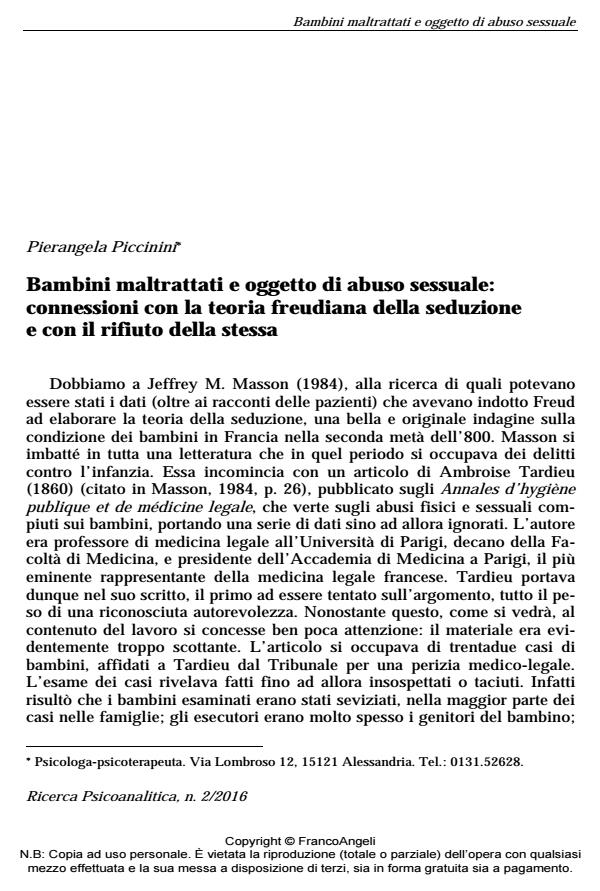Abused children and victims of sexual abuse: connections with freud’s theory of seduction and rejection of the same
Journal title RICERCA PSICOANALITICA
Author/s Pierangela Piccinini
Publishing Year 2016 Issue 2016/2
Language Italian Pages 16 P. 59-74 File size 93 KB
DOI 10.3280/RPR2016-002005
DOI is like a bar code for intellectual property: to have more infomation
click here
Below, you can see the article first page
If you want to buy this article in PDF format, you can do it, following the instructions to buy download credits

FrancoAngeli is member of Publishers International Linking Association, Inc (PILA), a not-for-profit association which run the CrossRef service enabling links to and from online scholarly content.
Masson’s discussion of Freud’s abandonment of the seduction theory is reported. Two different versions of Freud’s dream on “closing the eyes” are then examined. Recent critiques of Freud by Miller. Krüll and Bowlby, and the older critique by Ferenczi, are then reported. Finally, the stress on real-life traumatic events in recent literature is pointed out.
Keywords: Trauma, sexual abuse, seduction theory, battered children, hysteria, patriarchy
Pierangela Piccinini, Bambini maltrattati e oggetto di abuso sessuale: connessioni con la teoria freudiana della seduzione e con il rifiuto della stessa in "RICERCA PSICOANALITICA" 2/2016, pp 59-74, DOI: 10.3280/RPR2016-002005